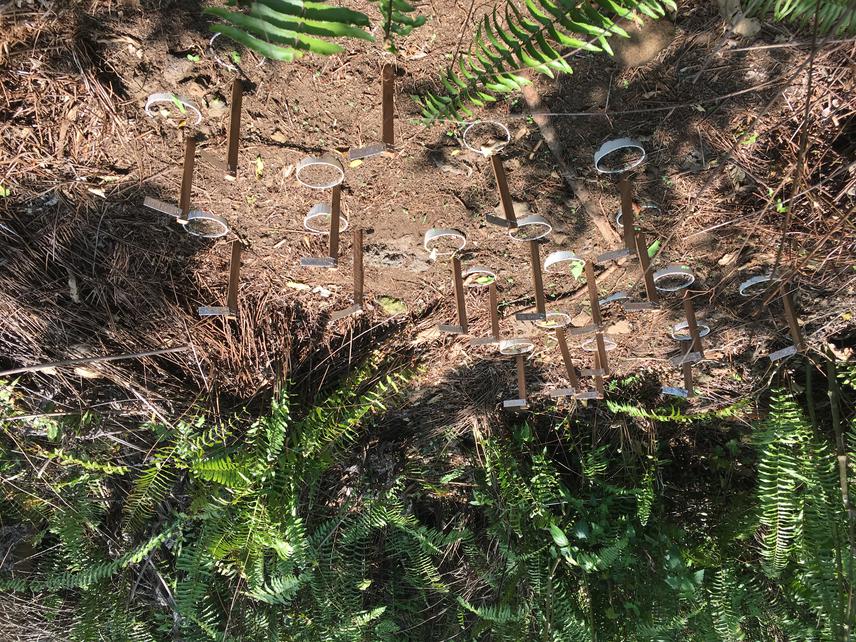Luis Carlos Beltrán Lacouture
Other projects
9 Aug 2023
Development of Plant-Disperser Networks in Restored Fragments in Los Tuxtlas, Veracruz, Mexico
Thirteen years ago, my colleagues established in Los Tuxtlas, Veracruz, Mexico, a tropical restoration experiment composed of 24 plots (30x30m) separated by 30 m of actively-grazed pasture belonging to three treatments: (A) eight plots planted with animal-dispersed plants, (B) eight planted with wind-dispersed plants, and (C) eight plots left unplanted as controls. I take a multi-pronged approach to evaluating the success of each treatment by comparing them on the return of: (A) biodiversity, (B) forest structure, and (C) ecological processes. This information is key to supplementing our knowledge of restoration ecology for the benefit of forest-dependent species and agricultural landowners alike.

Fern Interference Experiment.
Study I (Invasive Fern Experiment): Previously collected data shows that plant recruitment in our plots is hampered by the growth of an invasive fern species, Nephrolepis brownii. To design an eradication plan, we first need more information on how the fern interferes with recruitment (is it above- or below-ground competition, or both?). By germinating seeds in conditions where ferns are limiting in how they compete with germinating seedlings, I will obtain this information.
Study II (Soil Properties): Back in 2006, my colleagues assessed the soil properties of the experimental plots. I plan to collect additional soil samples to compare how soil properties have changed over time and the effect of restoration treatment. Through my colleageus at the University of Illinois, Chicago, we will also determine the isotope signature of the soil carbon to determine how much of that carbon was supplemented by the planted trees. The isotope signature of soil nitrogen will be used to determine how much was supplemented by nitrogen-fixing bacteria relative to pasture and forest levels.
Study III (Foraging Behavior): We have plenty of information on bird species that cross through our experimental plots, but very little about our mammals. By evaluating the preference mammals have for our restoration plots, we may be able gain more information on which restoration treatment is most effective. I will carry out a Giving-Up Density (GUD) experiment, where a set density of food (millet) is provided and replenished daily in trays with a set volume of substrate (sand). Through the use of camera traps I will determine the identity of the forager species.
Study IV (Structural Complexity): Rapid, on-Ground Assessments (RGAs) based on easily-measured biophysical attributes (e.g., leaf litter depth, ground herbage, etc.) can be used to assess structural complexity, one of the measures of restoration success. I have developed my own RGA by selecting attributes relevant to the tropical forest we are trying to restore in Los Tuxtlas and scoring them from 0 to 3. I will apply this RGA to each of the 24 plots. To compare with the undisturbed forest, I will delimitate eight 30x30m plots within the forest and apply the RGA there too. The attributes' score will be added together to compare structural complexity by treatment.